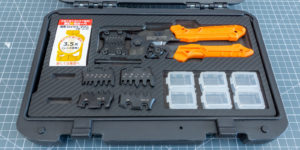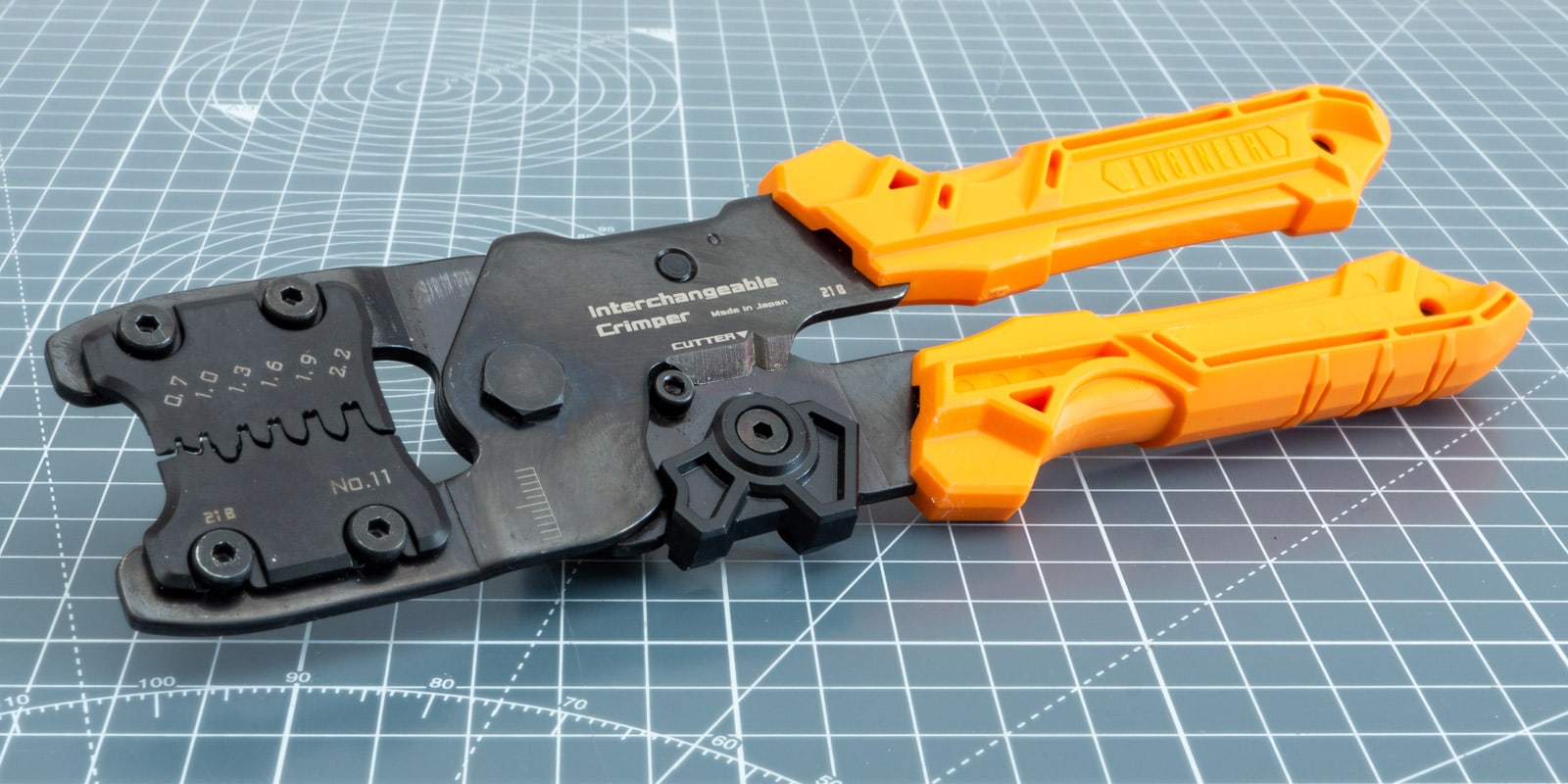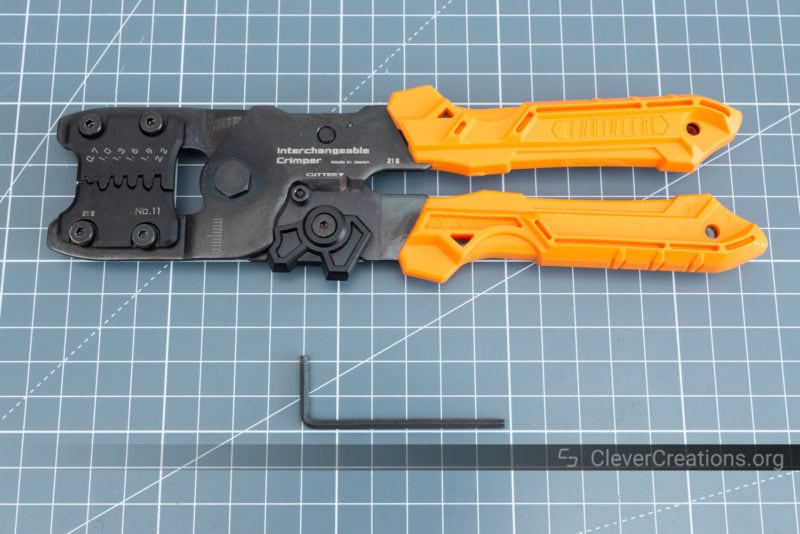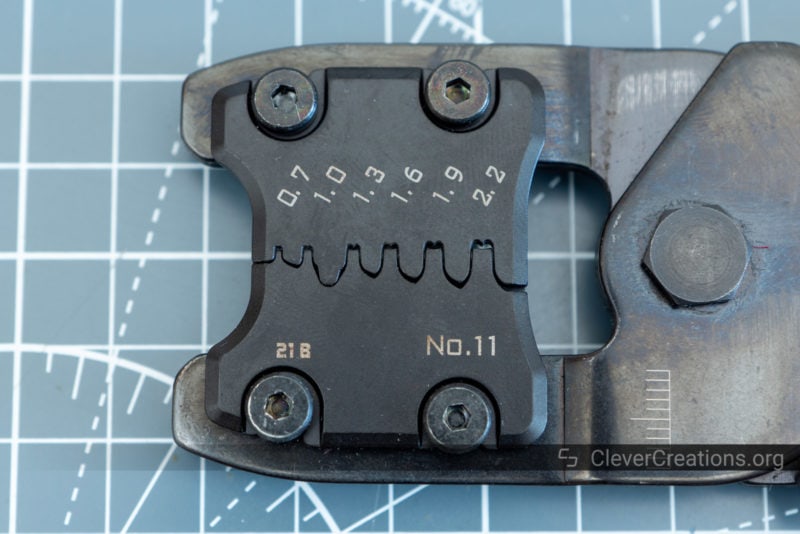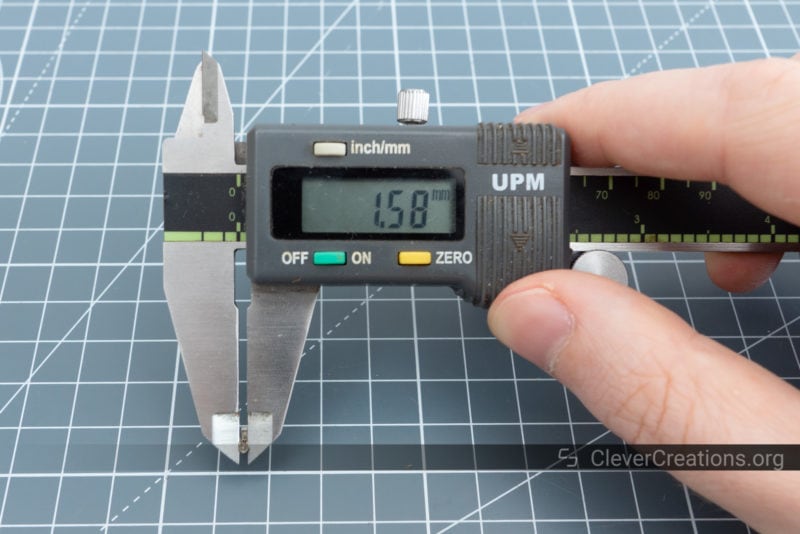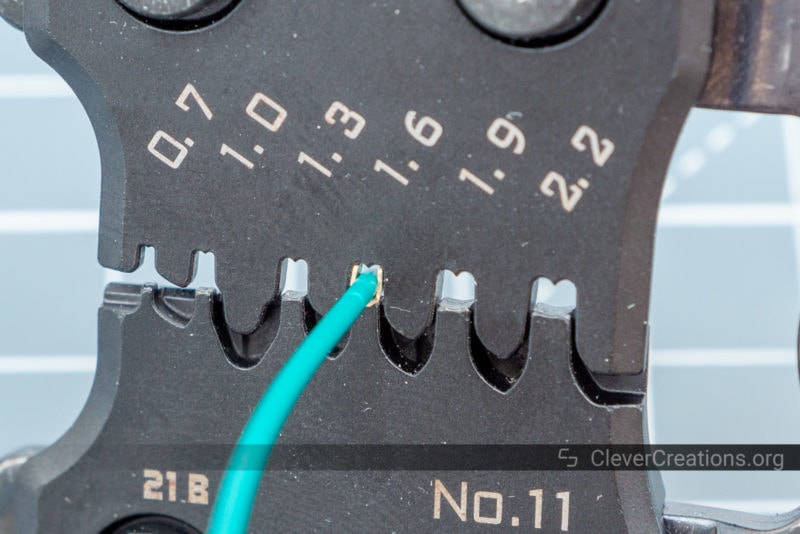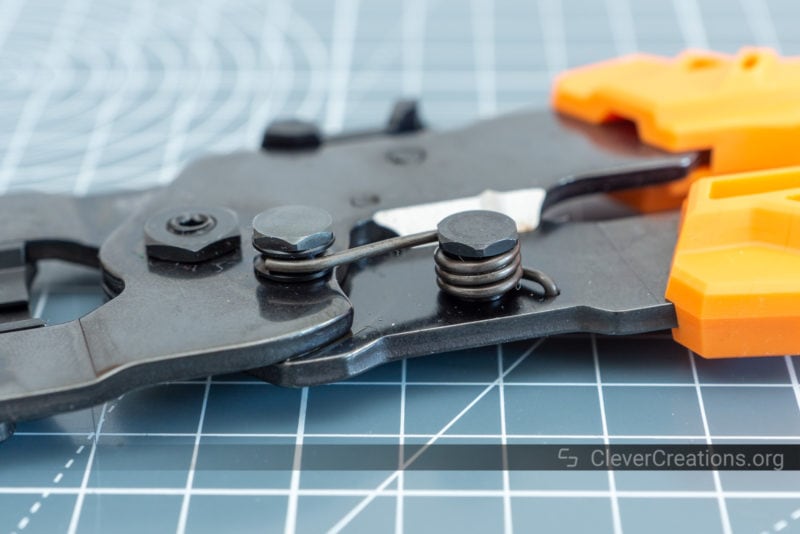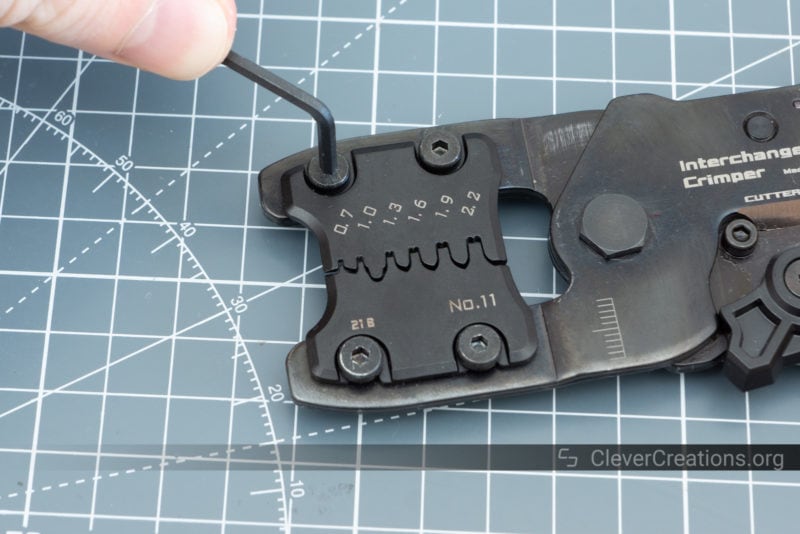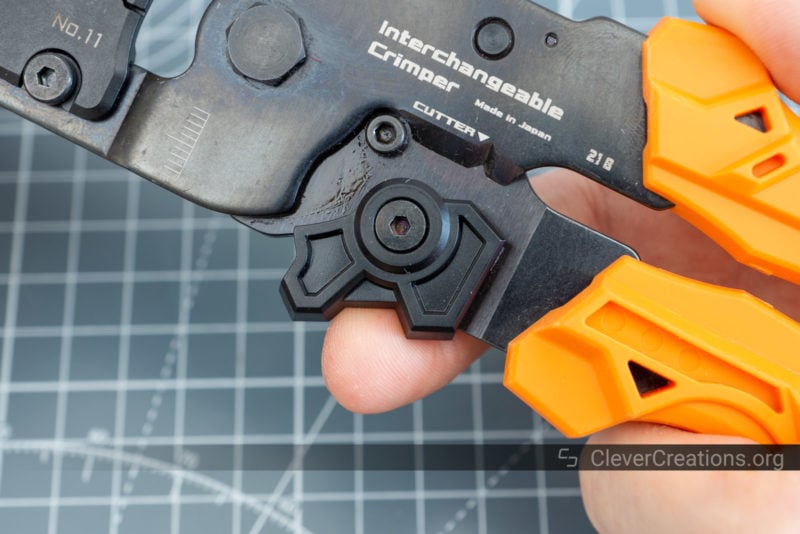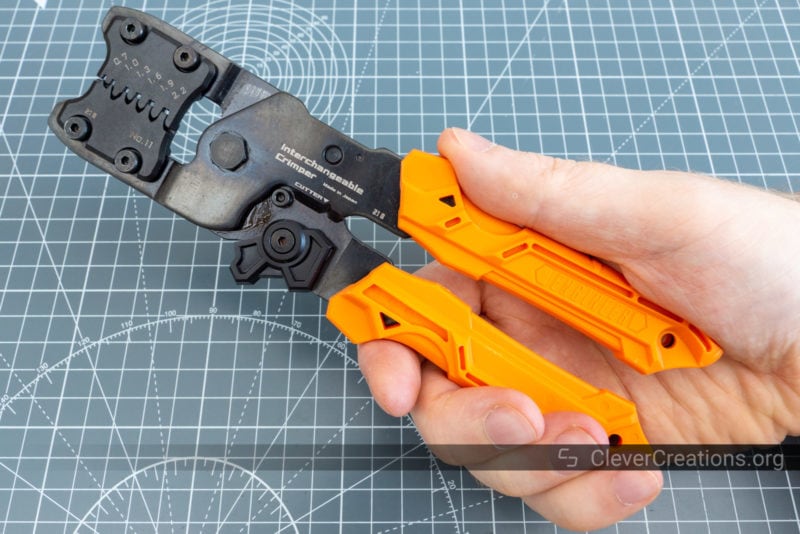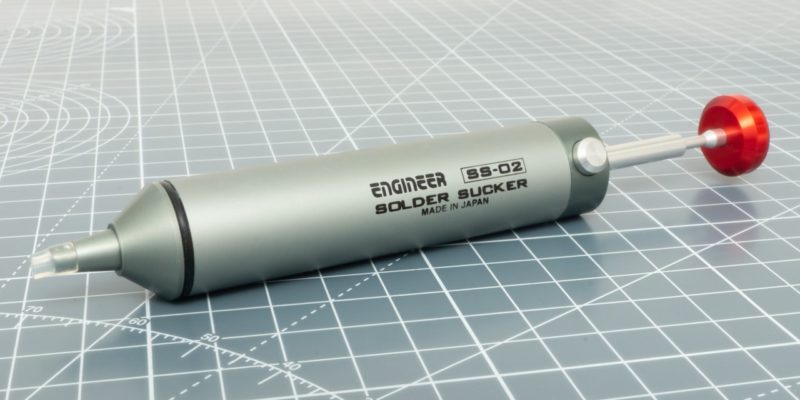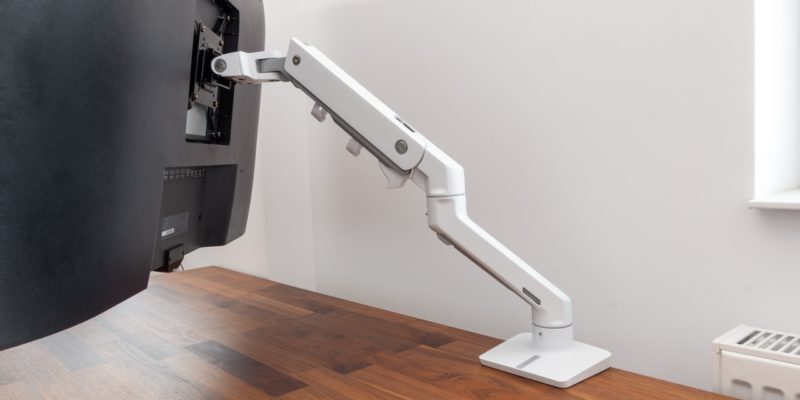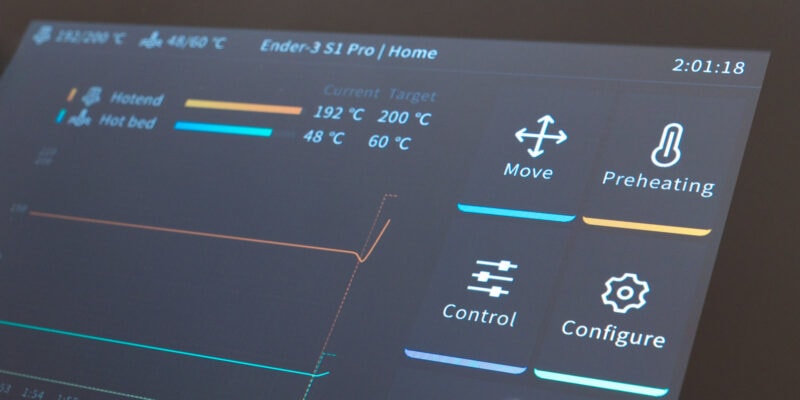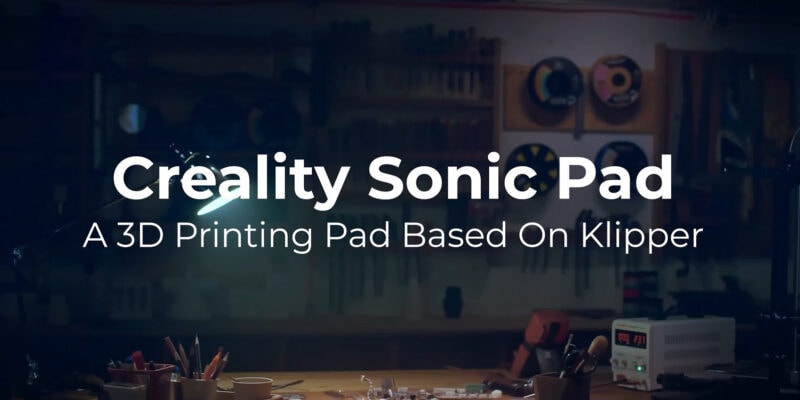- Perfect crimps each time
- High precision
- Compatible with most small to medium contacts
- Works left-handed too
- No die for DuPont / Mini-PV terminals
Crimping small contacts can be a challenge. Not only does the crimp tool you use need to be accurate and precise, it also needs to apply the right amount of pressure to conform the crimp terminal to the right shape. Using the wrong tool can lead to poorly crimped contacts or contacts that won’t even fit in their housing correctly.
The Engineer PAD-11 is one of Engineer’s top crimping tools, oriented towards crimping small to medium terminals. It claims to offer the precision required to perfectly crimp even the smallest terminals.
Today, we will investigate how the PAD-11 performs, how it compares to its competition and ultimately whether it is worth your money.
What’s in the Box
Inside the box of the Engineer PAD-11 you can find the following:
- PAD-11 crimping tool
- 2.5mm hex key
Features
The PAD-11 comes with several nifty features. Most prominently, it has interchangeable die plates that can be swapped out. This gives you the option to work with larger (>2.2 mm wide) crimp terminals without having to get a separate tool.
While no extra die plates are included with the PAD-11, you can buy them separately if you need them at a later point. If you do need them right away, the Engineer PAD-02 kit contains the PAD-11 along with the other available die plates.
The crimp tool is spring loaded, which helps combat fatigue when crimping. It’s a relatively common feature, but not one that you want to go without.
On the handle of the tool you can also find a built-in wire stripper and cutter. While sharp, it is a bit lacking compared to a quality standalone wire stripper and a set of flush cutters. It is nice to have, however, and does do the job decently enough when you have no other tools at hand.
The body of the tool also contains a latch that holds the tool closed when it is not in use. It is easy to flick with the index finger and does not accidentally open or close by itself.
Compatibility
The included die plates of the PAD-11 come with a generous six precision dies. Ranging from 0.7 to 2.2 mm in width, they are designed for small to medium open-barrel (F-type) crimp terminals.
This makes the tool an excellent solution for contacts from the JST-XH/PH/ZH series, Molex’s SL, KK-100, CLIK-Mate and Picoblade series, JAE MX-1900, Tyco D-1000 and D-Sub pins.
Officially, the PAD-11 is compatible with over 90 different terminals. You can find the full list here.
Selecting the correct size crimping die is straightforward. It starts with measuring the width of the conductor barrel when its wings are parallel.
Then you select the die width that matches the barrel width. Often there is no exact match, but then you round up. For example, when you measure a 1.75 mm wide barrel, you use the 1.9 mm die.
This process always gives you the correct die to use. The steps are the same regardless of whether you are crimping the conductor or insulation portion of the terminal.
Crimp terminals wider than 2.2 mm, for example JST-SVH terminals, are too large to be crimped on the PAD-11. For that, you would need to swap to a PAD-12S or PAD-13S die plate set or use a different crimp tool altogether.
We haven’t been able to find any official data on supported wire diameters, but based on the widths of the dies and data from similar products, it looks like the PAD-11 can crimp wires of AWG #34 to #20, and perhaps also AWG #18.
One thing that is missing from the PAD-11 is an O-shaped die. This shape is particularly useful for DuPont / Mini-PV contacts that require a circular insulation crimp that does not pierce the wire insulation.
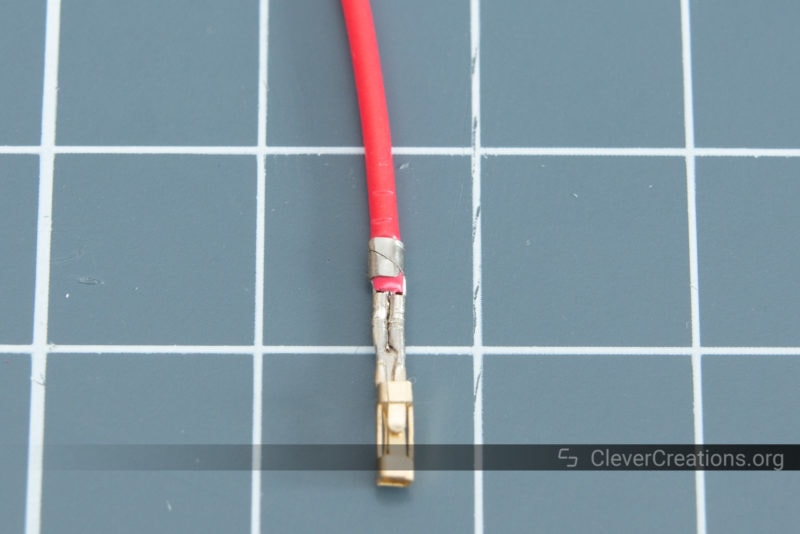
O-shaped dies are rare (aside from on expensive official tools, of course), but you can find one on the slightly more expensive Hozan P-707. We will compare this tool and the PAD-11 in more depth later.
An alternative is to just get a cheap tool with a round O-shaped die, for example the TZ-4228B, for DuPont crimps and crimp all other contacts with a quality tool like the PAD-11.
Unfortunately, there is no single solution that crimps everything.
Build Quality & Precision
It is important that a crimping tool is accurate and precise out of the box and keeps functioning that way over its lifetime. In that regard, the PAD-11 does what is expected from it.
The key components of the tool (frame, dies) are constructed from high quality steel that lasts a long time without showing signs of wear. Oil-resistant thermoplastic rubber is used for the handles, so that it both provides comfort and does not degrade after exposure to grease and oils.
The dies itself have been precisely machined. This is a significant improvement over similar crimp tools (Engineer PA-09 and PA-21) and Chinese clones (IWISS IWS-1442L and IWS-2820M). These often have dies with poorly finished machining (or even cast dies) that cause contacts to get stuck and crimps to fail more often.
The PAD-11’s dies come without any manufacturing inconsistencies or misalignments. As a result, you can expect it to make OEM quality crimps on even the smallest crimp terminals.
Ease of Use
The PAD-11 is comfortable to use (tested with average-sized hands). Because its long handles offer more leverage than those of other, shorter crimping tools, applying the right amount of force does not wear your hand out as quickly.
To add to that, the tool itself is properly balanced. Its built-in spring further aids in reducing fatigue.
The PAD-11 does not have a ratcheting system. Instead, you have manual control over the force applied on the crimp terminal. This typically gives better crimp results, even though you do need to make sure to apply the right amount of pressure by hand. Usually, this takes a couple crimps to learn how to do correctly.
Ratcheting crimpers do not give precise control over the crimp, but instead they offer consistent crimp quality and let you crimp faster.
Unfortunately, the quality that Chinese ratcheting crimp tools deliver is consistently mediocre. Manufacturers’ official crimp tools do provide consistent high quality results, but those tools cost hundreds of dollars each and only work on a single type of terminal.
For that reason, many people prefer the superior crimp results of a quality manual tool, like the PAD-11, even though it takes a bit more time and practice to operate.
Similarly, the PAD-11 requires you to crimp twice for each terminal. Once for the insulation and once for the conductor. This takes longer than single-action crimpers, but does get you the perfect crimp each time.
Budget single-action crimping tools tend to apply too much or not enough pressure on one of the crimps (insulation or conductor). They are also more prone to mess up crimp terminals when they are slightly misaligned in the die.
Once again, official crimp tools do offer perfect results with a single action, but at a financial cost that is hard to justify for hobbyists.
It’s all a matter of tradeoffs. The Engineer PAD-11 is one of the tools that offers high quality, precision crimps with the cost of spending a bit of extra time per crimp.
All right, let’s get back to the usability of the tool.
Swapping out die plates (if you happen to get other ones) takes 15 seconds and is practically foolproof. No risk of misalignment whatsoever, unless perhaps some debris gets stuck in between the plates and the tool itself. That is easy to fix, however.
The latch that locks the tool is positioned in the right place and easy to engage/disengage. There is no risk of accidentally opening or closing it when you do not want it to.
We came across users that advise to be cautious not to get your skin in between the blades of the built-in wire cutter. In our experience, there is really no risk of that when the tool is held correctly.
Crimping Results
Combining all qualities of the PAD-11 results in a well made crimping tool that does a professional job. When used correctly, it will make your wiring work look as if it just came from the factory.

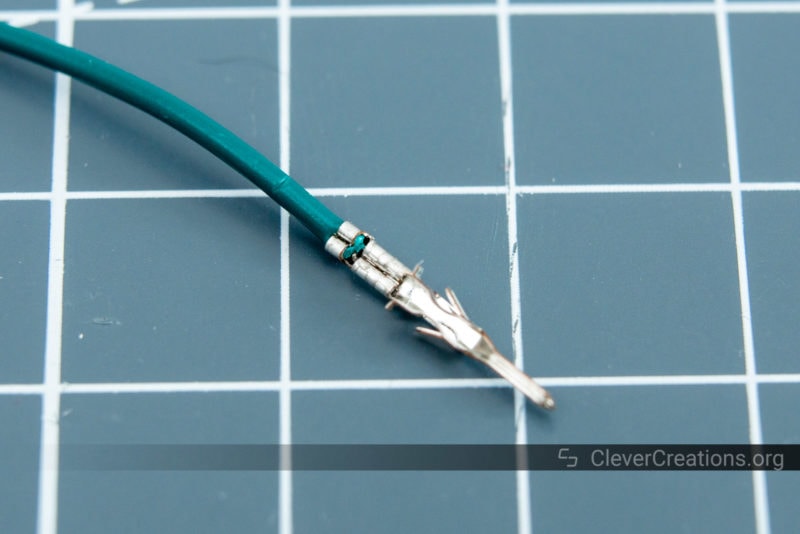
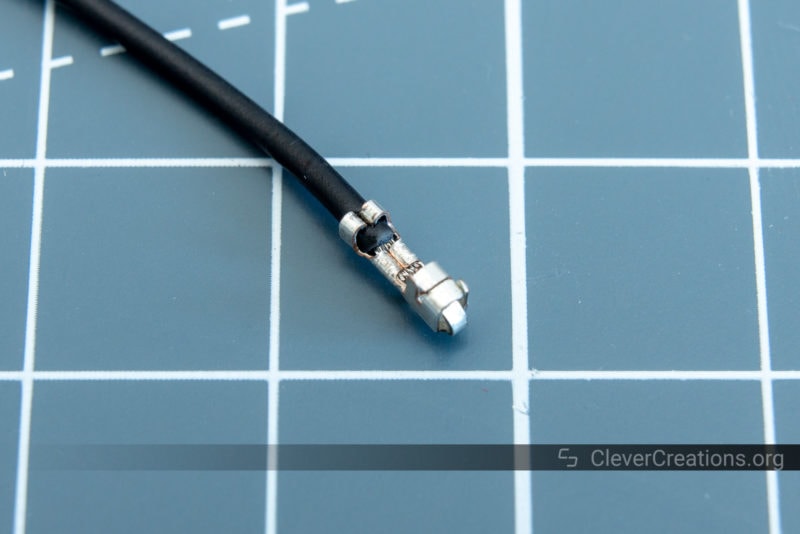
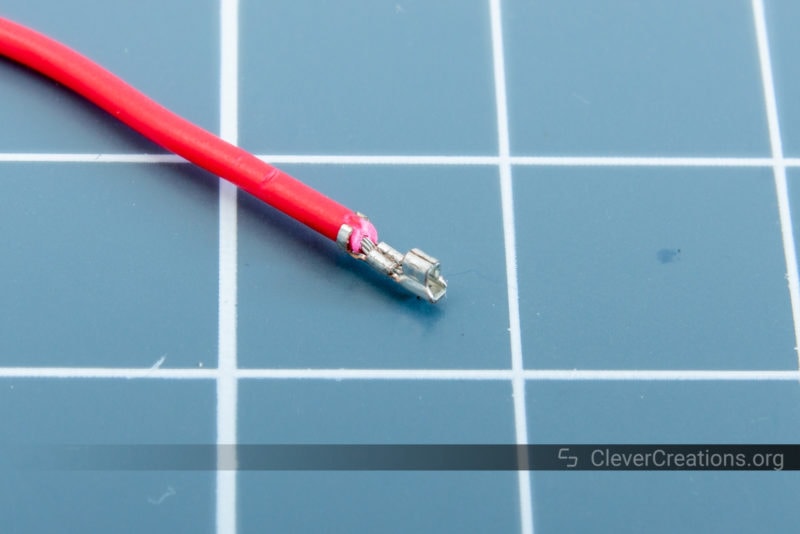
Disadvantages
A quick recap of the potential disadvantages of the PAD-11.
- Cost. Its price is significantly higher than that of Chinese crimping tools (e.g. IWISS). That said, you do get what you pay for.
- No ratcheting mechanism. Unfortunately, no ratcheting crimper exists that gives perfect results with a wide range of crimp terminals.
- Crimp twice per connector. Again, this is a bit of a trade-off. Crimping the conductor and insulation separately takes more time, but does give better results with budget (non-official) tools.
- No O-shaped die. This is the only potential disadvantage that we actually consider to be a disadvantage. An O-shaped die is ideal for crimp terminals that have wings that wrap around wire insulation (as opposed to piercing it). Popular terminals that require an O-shaped die for good results are DuPont/Mini-PV pins and sockets.
The slightly higher priced competitor of the PAD-11, the Hozan P-707, does offer this die. An alternative is to get a cheap TZ-4228B exclusively for DuPont terminals.
Engineer PAD-11 vs Hozan P-707
The PAD-11 and Hozan P-707 crimping tools are often compared. They are both manufactured in Japan and are both found at the upper end of the hobbyist crimping tool spectrum.
Compared to the PAD-11, the P-707 has more dies (15 in total), including a round O-shaped die that can be used for DuPont type connectors. On the other hand, the PAD-11 has two dies with small sizes (0.7 and 1.0 mm) that you won’t see on the P-707. If you want to crimp JST-ZH contacts, for example, the 1.0 mm die is what you will need.
Interchangeable die plates are only featured on the PAD-11, but because the die widths of the three plates (PAD-11S/PAD-12S/PAD-13S) overlap, you still only end up with 12 die sizes on the PAD system.
The P-707 has a compound hinge, unlike the PAD-11 that has a simple scissor-like hinge. A compound hinge amplifies the force from your hand, letting you crimp with less effort. However, this also makes it possible to damage or destroy crimp terminals by applying too much force. There is no risk of that with the PAD-11.
Both tools are similar in build quality and both require two actions per crimp (conductor and insulation). Neither tool has a ratcheting system, which, depending on your preferences, can be a pro or a con (we like our crimp tools without).
At the time of writing this, the P-707 costs about 25% more than the PAD-11.
Engineer PAD-11 vs PA-09
At first sight, Engineer’s PAD-11 and PA-09 look fairly similar. They do have several crucial differences that make you want to choose one over the other.
Both crimping tools are suited for small to medium terminals and come with 1.0 / 1.3 / 1.6 / 1.9 mm wide dies. The PAD-11, however, comes with two extra dies (0.7 and 2.2 mm). This makes the PAD-11 compatible with more crimp terminals than the PA-09.
Of course, the PAD-11 also has the option to swap die plates for even more compatibility. With the PA-09, most people resort to buying a separate PA-21 when they need to extend their crimping capabilities.
The PAD-11 is longer than the PA-09, giving you more control over the applied crimping force and causing your hand less strain in the process. Because of the extra length and the modular die plate system, however, the PAD-11 is also heavier.
The machining finish of the PAD-11 is superior to that of the PA-09. On the PA-09, pins and sockets have a tendency to get stuck after crimping. No such thing on the PAD-11.
Similarly, the hinge on the PA-09 has a habit of getting a bit sticky. Even though, you can solve this by manually applying extra lubrication.
Both are good options compared to Chinese crimping tools, but the PAD-11 is definitely placed one step above the PA-09. It also costs about 50% more.
Conclusion
The Engineer PAD-11 is a quality tool that gives you professional crimps on nearly all types of small to medium size open-barrel crimp terminals. It excels at crimping JST-XH/PH/ZH terminals, as well as Molex’s SL, KK-100, CLIK-Mate and Picoblade series. Aside from these contacts, it is compatible with many more.
While the PAD-11 is priced higher than your typical Chinese crimping tool, it does justify this by providing better crimping results and saving you plenty of time and frustration.
The tool is non-ratcheting and requires two actions per crimp, which does require you to spend more time per crimp than you would with expensive official crimping tools. We can’t have it all on a budget, unfortunately.
If you are looking for a budget tool for small crimp terminals, the PAD-11 is the best choice at the moment.
Aside from the PAD-11, Engineer also sells the PAD-12 and PAD-13. They are identical to the PAD-11, except they come with die plates with larger dies. There is also a PAD-02 kit available, which contains a single crimp tool with all three available die plates.
